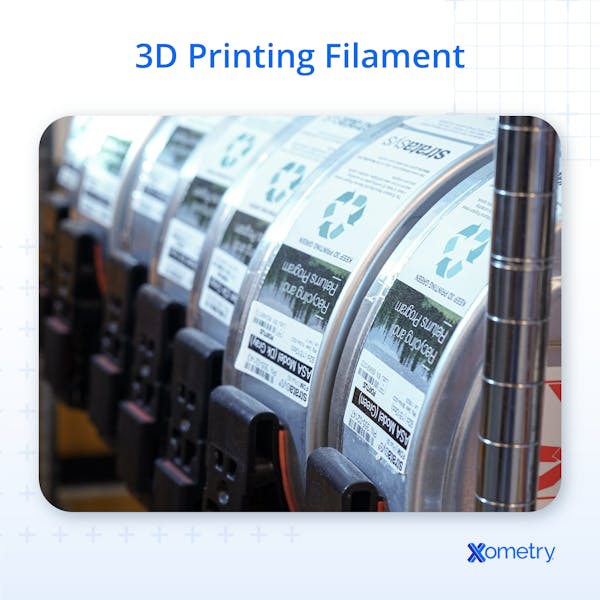“3D printing for education” encompasses all the facets of the integration of three-dimensional printing technologies into the learning environment. It offers a hands-on approach to instruction that transcends traditional teaching methods. This innovative form of education is pivotal, as it fosters creativity, enhances understanding of complex concepts, and provides a tangible connection to theoretical knowledge.
The advantages of using 3D printing in the classroom are numerous. Learning this skill can not only increase student participation, but it can help give the student the critical thinking and problem-solving abilities they will need for success in the future. To start this educational trip in the classroom you will need a 3D printer, design software, slicing software, and a supply of raw materials.
This article will discuss the importance and benefits of 3D printing for education.
What Is 3D Printing for Education?
The term "3D Printing for Education" describes the application of additive manufacturing technologies to improve educational opportunities. It gives teachers and students a hands-on approach to exploring concepts and ideas by having them create three-dimensional items from digital models. In addition to helping students understand difficult concepts, this practical method promotes creativity and innovation in the classroom.
How To Use 3D Printing for Education
To effectively use 3D printing in educational settings, follow these steps:
- Integrate with Curriculum: Identify areas of the curriculum where 3D printing can enhance learning, such as science, technology, engineering, arts, and mathematics (STEAM).
- Design and Model: Teach students to design 3D models using computer-aided design (CAD) software, fostering skills in geometry and spatial reasoning.
- Print and Test: Allow students to print their designs and test their functionality, promoting problem-solving and critical thinking.
- Collaborate and Share: Encourage collaboration among students to work on group projects, and share designs with the broader community to enhance communication skills.
- Reflect and Iterate: After printing, have students reflect on their designs and iterate on them, which teaches the value of continuous improvement and resilience.
What Is the Importance of 3D Printing for Education?
The importance of 3D printing for education lies in its ability to transform learning from a passive intake of information to an active creation process. Here are some of the ways it does that:
1. Enables Hands-On Learning
With the use of 3D printing, concepts may become tangible models that students can engage with. Better understanding and retention may result from this practical approach, which accommodates different learning styles.
2. Enhances Practical Understanding
By designing and printing objects, students apply theoretical knowledge to practical scenarios. For instance, in science, students can print models of molecules to understand their structures better. In engineering, they can prototype designs and see how they function in real life. This specificity ensures students gain practical skills and insights directly relevant to their fields of study.
3. Transforms Theory Into Tangible Objects
When students can touch and see the outcomes of their labor, concepts that are challenging to understand in abstract forms become tangible, closing the theory-practice gap.
4. Fosters Engagement and Interactivity
The interactive aspect of 3D printing captivates students, fostering a lively and enjoyable educational journey. It encourages active participation, ensuring that students remain motivated and deeply involved in their learning process, thereby transforming the classroom into a hub of innovation and excitement.
5. Develops Problem-Solving Skills
Students develop critical thinking and problem-solving skills as they design and print various objects using 3D printing technology. Whether it's designing prototypes, creating models, or solving design challenges, the process involves identifying problems, generating solutions, and implementing them through hands-on experimentation with 3D printing.
6. Boosts Creativity
3D printing encourages students to think outside the box and develop unique solutions, fostering creativity and innovation.
7. Advances STEAM Education
Learning about additive manufacturing provides a platform for students to explore STEAM subjects in a hands-on manner, preparing them for higher education and possible careers in these fields or related areas.
8. Provides Visual-Tactile Learning
For visual learners, 3D printing offers a tactile experience that is crucial in improving their spatial reasoning abilities. Students can gain a better understanding of spatial relationships and complex geometries through the physical manipulation of 3D models, which can enhance their learning and recall of educational content.
9. Prepares for Future Careers in Advanced Manufacturing and Technology
Acquiring proficiency in 3D printing positions students favorably in the job market, where demand for such expertise is surging. Mastery of this technology signals adaptability and readiness for industries where innovation is key, giving students a distinct advantage in their future careers.
What Is the Benefit of 3D Printing for Education?
The primary benefit of 3D printing for education is the enhancement of experiential learning. It helps students get a deeper understanding of course content by enabling them to translate academic knowledge into real-world applications. This practical method promotes the growth of critical thinking, creativity, and problem-solving abilities—all of which are important in the high-tech world of today.
How To Incorporate 3D Printing for Education in the Curriculum
3D printing can be incorporated into an educational curriculum by following these steps:
- Identify Relevant Subjects: Determine which subjects could be enriched by 3D printing, such as STEAM fields.
- Develop 3D Design Skills: Integrate CAD software into the curriculum to teach students design skills.
- Create Real-World Projects: Assign projects that require students to solve real-world problems using 3D printing.
- Encourage Innovation: Use 3D printing to challenge students to think creatively and innovate.
- Facilitate Collaboration: Promote teamwork by having students work on group 3D printing projects.
Do Teachers Struggle To Integrate 3D Printing Into the Curriculum?
Yes, teachers often face challenges when integrating 3D printing into the curriculum. These difficulties include: inadequate training, unfamiliarity with the technology, and trouble coordinating 3D printing projects with current educational standards.
What Are the Possible Challenges in Incorporating 3D Printing for Education?
Possible challenges in incorporating 3D printing into education include:
- Resource Availability: Limited access to 3D printers and materials.
- Teacher Training: Need for professional development to learn 3D printing technologies.
- Curriculum Development: Integrating 3D printing into the curriculum in a meaningful way.
- Time Constraints: Finding time within the curriculum for 3D printing projects.
- Technical Support: Ensuring ongoing technical support for equipment and software.
Is the Availability of 3D Printing Technology Widespread in Educational Settings?
No. While 3D printing technology is becoming more common in educational settings, it is not yet widespread. It is not widely available due to factors such as cost and the requirement for specific training for teachers. Nonetheless, there's a rising movement in many educational settings to make more use of this technology.
What Equipment Is Needed for 3D Printing for Education?
In 3D printing for education, a certain minimum amount of equipment and software is essential to facilitate the process and ensure a smooth learning experience. The minimum equipment requirements are listed below:
1. 3D Printers
These are the core machines that bring digital designs into physical reality, layer by layer. Depending on their specifications and features, 3D printers can vary in cost, ranging from budget-friendly options to more advanced models. A good entry-level 3D printer for classroom use is the Creality Ender 3.
It offers a balance between affordability and functionality, making it suitable for educational environments. In addition, its open-source firmware and compatibility with 3rd-party hardware makes it a great option for those who wish to modify the machine allowing functionality beyond its off-the-shelf capabilities.
With its user-friendly design, reliable performance, and ease of maintenance, the Creality Ender 3 provides students with a practical introduction to 3D printing technology without breaking the budget.
2. Computer Workstations With Software
Students can design and edit digital models using CAD (computer-aided design) software before sending them to a 3D printer. Students need to have access to these CAD-equipped workstations to develop their design skills and convert their ideas into printable files. Also, a slicer software is needed to convert the instruction to G-code for the printer to execute.
3. Filament or Resin for Printing
Filament (for FDM (fused deposition modeling) printers) or resin (for SLA (stereolithography apparatus) and DLP (digital light processing) printers) are the materials used for printing. Resins and filaments are available in various types and colors, allowing students to experiment with different properties and aesthetic choices in their designs.

4. Print Bed Adhesives
These adhesives help ensure that the printed object adheres securely to the print bed during the printing process, preventing warping or detachment and ensuring successful prints.
5. Calipers for Measuring and Precision
Calipers are essential instruments for precisely determining the dimensions of printed items. They help with the printing process, precision, and quality control.
6. Safety Equipment (Gloves, Goggles)
Safety gear is important to protect students from potential hazards associated with 3D printing, such as hot surfaces and spattering of raw material.
7. Ventilation System for Handling Fumes (if Applicable)
To maintain a safe working environment in the classroom when using 3D printers, consider installing a ventilation system equipped with HEPA (High-Efficiency Particulate Air) filters. These systems effectively capture and filter out harmful particles and fumes emitted during the 3D printing process, ensuring the air remains clean and safe for students and educators.
8. Storage Solutions for Filament and Printed Objects
Effective storage solutions are essential in educational settings because they keep resources organized and protect printed materials from deterioration. To preserve safety and order, put your filament and 3d printed object in a cabinet. In countries with high humidity, a dry cabinet may be needed to prevent moisture from being absorbed into the filament.
9. Maintenance Tools for 3D Printers
Regular maintenance is essential for ensuring the longevity and optimal performance of 3D printers. Maintenance tools, including Allen wrenches and lubricants, are necessary to keep printers running smoothly. By conducting routine upkeep, users can prevent mechanical issues, maintain print quality, and maximize the lifespan of their equipment, fostering uninterrupted learning experiences.
10. Quality Control Tools for Assessing Print Quality
Tools such as inspection mirrors, calipers, and magnifying glasses help students evaluate the quality of their prints and identify areas for improvement.
11. Classroom Display or Projection System for Demonstrations
A display or projection system provides teachers with a visual platform to present their 3D printing work and procedures to the entire class prior to the hands-on learning process, which increases student engagement and participation. It enables in-the-moment presentations that help students watch and comprehend the complexities of additive manufacturing, piquing their interest and promoting involvement.
12. Backup Power Solutions To Prevent Data Loss During Power Outages
Power outages can disrupt printing processes and result in data loss. Backup power solutions such as uninterruptible power supplies (UPS) help prevent such interruptions, ensuring continuity in the learning process.
Is Teaching 3D Printing Advisable for Beginners?
Yes, teaching 3D printing to beginners in the educational system is a good idea. It introduces students to fundamental concepts of design and manufacturing, fostering a practical understanding of STEAM subjects. Starting early can spark interest and develop skills that are increasingly valuable in almost any industry.
Summary
This article presented 3D printing for education, explained it, and discussed its importance and benefits. To learn more about 3D printing for education, contact a Xometry representative.
Xometry provides a wide range of manufacturing capabilities, including 3D printing and other value-added services for all of your prototyping and production needs. Visit our website to learn more or to request a free, no-obligation quote.
Disclaimer
The content appearing on this webpage is for informational purposes only. Xometry makes no representation or warranty of any kind, be it expressed or implied, as to the accuracy, completeness, or validity of the information. Any performance parameters, geometric tolerances, specific design features, quality and types of materials, or processes should not be inferred to represent what will be delivered by third-party suppliers or manufacturers through Xometry’s network. Buyers seeking quotes for parts are responsible for defining the specific requirements for those parts. Please refer to our terms and conditions for more information.


